How Long Does Rustoleum Take to Dry? (Rust-Oleum Drying Time)
Rustoleum paint products’ drying time vary depending on the paint base, type of paint used, surface to be painted, and the environmental conditions at the time of application. According to Rust-oleum’s product reference guide, their ... Read more The post How Long Does Rustoleum Take to Dry? (Rust-Oleum Drying Time) appeared first on Arthitectural.
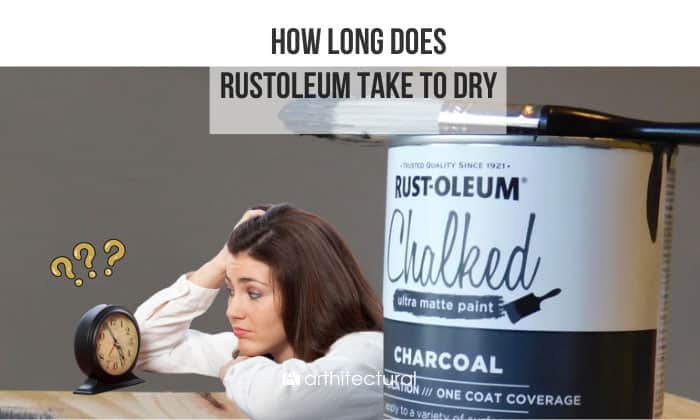

Rustoleum paint products’ drying time vary depending on the paint base, type of paint used, surface to be painted, and the environmental conditions at the time of application.
According to Rust-oleum’s product reference guide, their products dry to the touch in 15 minutes to 6 hours and hard dry in 15 minutes to 9 hours. Again, this depends on the paint used.
Keep on scrolling to understand how long does Rustoleum take to dry on different surfaces, and the different factors that affect the curing process. Some tips to fast-track Rustoleum drying time are also listed.
Rustoleum Drying Stages
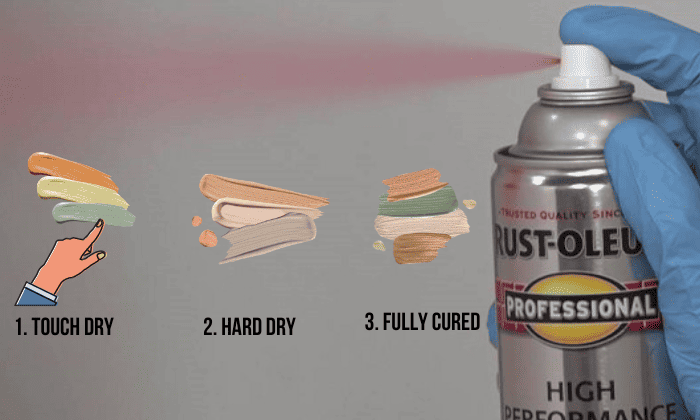
Rustoleum paint’s drying stages consist of the following.
1. Touch Dry (also commonly called “surface-dry”)
Touch dry is the stage where a paint surface is not wet when touched but also not hard enough to handle a pinch. When you press the Rustoleum paint that’s in this stage, some of the paint may transfer onto your finger.
2. Hard Dry (also known as “dry to handle”)
Hard dry is the period where the paint is not deformed when handled. The paint surface at this stage can handle light pressures.
3. Fully Cured
In a fully cured stage, the Rustoleum paint has reached its maximum drying time, which means you cannot move the paint around. It is when the coating can be touched or pressed without worrying about hand marks or smears.
How Long Does It Take For Rustoleum to Dry?
1. Depend on Physical Paint Properties
To feed your curiosity on how long does it take for Rustoleum to dry, you must first understand the physical types of paint pertaining to the solvent used.
- Water-based Paint
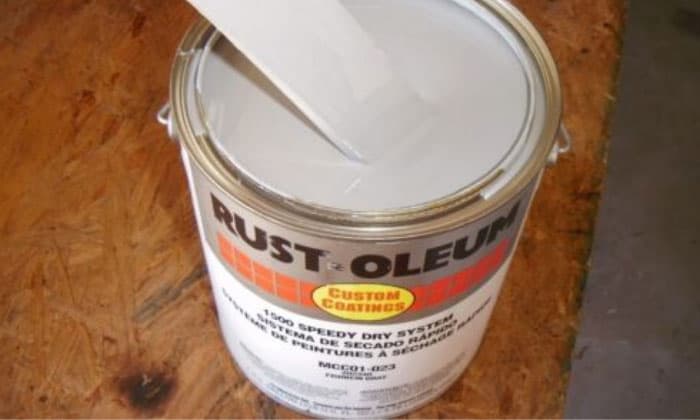
Water-based Rustoleum paint and primer use water as the solvent for their raw materials. This guarantees an incredibly short drying time, since water evaporates fast.
A water-based primer can be dry to the touch in 35 minutes and top-coated after an hour. This short span of time allows you to conveniently move on to the recoating process without worrying about the applied primer.
Note that acrylic paints tend to be water-based, and surfaces should be free from liquids when painting with them. If the application needs to be done before rain, there should be at least 6 hours leeway for the paint to be dried. This way, the coating is not affected by rain when it pours.
- Oil-based paint
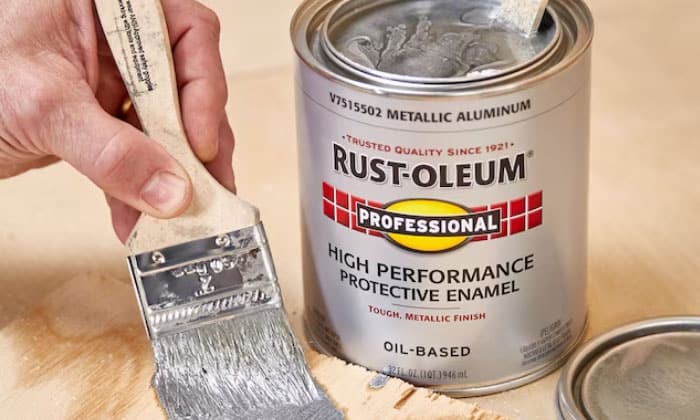
For an oil-based paint, the pigments are suspended in natural or synthetic oils that dries through a process called oxidation. Oil bases require a significant amount of time to cure. Their touch-dry period ranges from 6 – 8 hours, and the paint is ready for the second coating in 24 hours or even longer.
Rustoleum oil based paint is highly favored for exterior painting of metal surfaces. Its fantastic nature and durability does not yield to extreme weather conditions.
However, the mixture also emits a strong and unpleasant smell that requires the wind to dissipate.
2. Depend on Types of Paint
Different types of paint have varied effects on drying time, depending on their formulation and properties. Below is a brief overview of the common paint choices that have different cure time:
- Rustoleum Enamel Paint
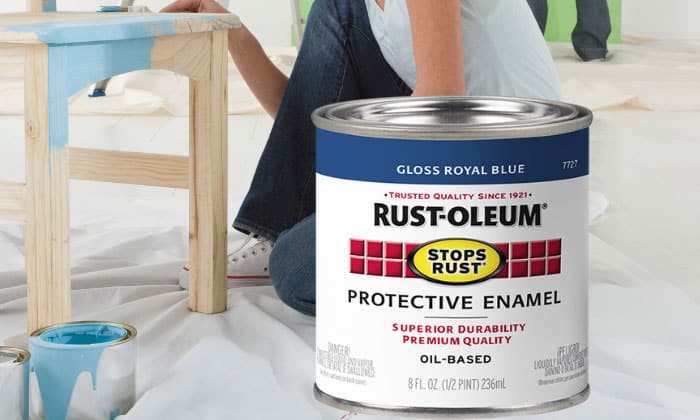
Rustoleum enamel is a heavy-duty and corrosion-resistant paint with an oil or alkyd base. Aside from shielding surfaces against weathering, it also provides a nice, glossy sheen on metal, plastic, or wood where applied.
Generally, when you apply Rustoleum 2x ultra-cover enamel sprays within the range of temperature and humidity stated by the manufacturer, you can just wait 20 minutes for the paint to become touch-dry and an hour to become hard-dry.
Meanwhile, stop-rust enamel brush paint takes 2 – 4 hours to be touch-dry, 5-9 hours to hard dry, and 24 hours to be ready for recoat after the application and within normal weather conditions.
- Rustoleum Lacquer Paint
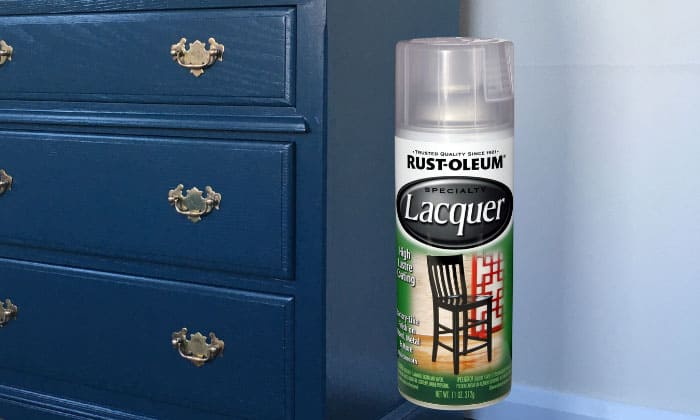
Rustoleum lacquer paint is another Rustoleum line that is known for its clear protective coating on wood, metal, and plastic. Its glossiness and resistance to scratches and chips makes it a popular choice for commercial applications.
Lacquer paint is also designed to dry quickly. The Rustoleum custom matte premium lacquer paint and Rustoleum custom clear premium lacquer aerosol paint have a touch-dry period of 20 minutes, hard dry of 30-60 minutes, and are free to be recoated anytime.
This presupposes that the temperature stays at 25℃ and the environment has 50% relative humidity. Usage-wise, this type of Rustoleum spray paint may not be best for beginners as it dries too fast.
- Rustoleum Epoxy
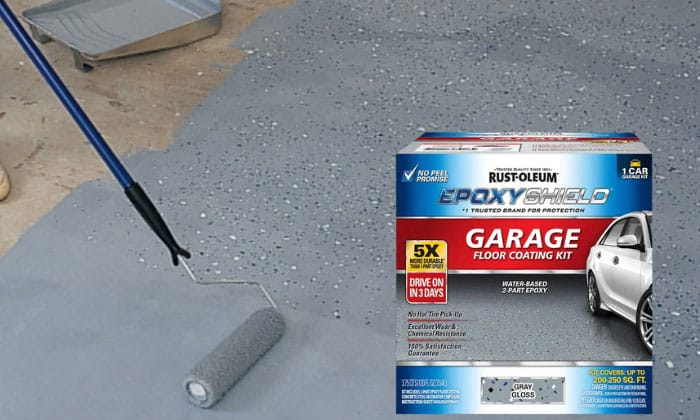
When epoxy paint is applied on plastic and other surfaces, it leaves a porcelain-like appearance that resists abrasion. You can spray it easily, since it comes with an advanced spray system.
There is the Rustoleum epoxy shield which is convenient for high traffic areas such as the garage. It laminates the floor with its 2-part formula, leaving a glossy sheen finish. This paint has a hard-dry time of 5 – 9 hours and is fully dry within 24 hours.
3. Depend on Surfaces
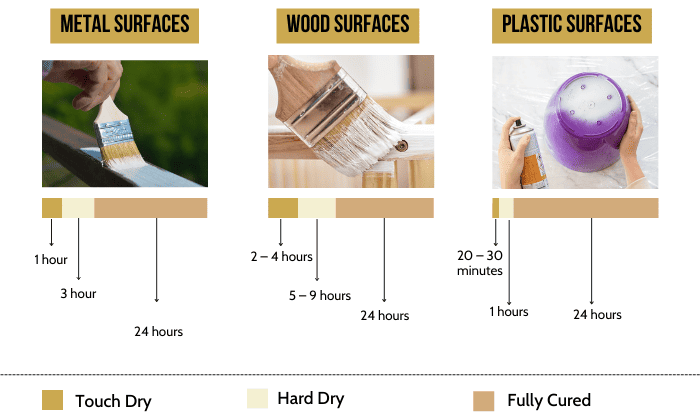
The type of surfaces painted also influence drying time. Generally, metal surfaces hard-dry in about 3 hours, wood in 5 – 9 hours, and plastic in an hour. The waiting time recommended for a water-based paint before the recoat is at least 3 hours, and for an oil-based paint and primer, it is 24 hours.
- Metal Surfaces
Generally, Rustoleum paint applied on metal surfaces has a touch-dry period of 1 hour, hard dry of 3 hours, and should be fully cured in 24 hours.
- Wood Surfaces
Rustoleum paint on wood surfaces has a longer drying time compared to metal. From the moment of application, it takes 2 – 4 hours to touch dry, 5 – 9 hours to hard dry, and 24 hours to fully dry.
- Plastic Surfaces
Plastic surfaces have the quickest drying time among the three. The touch-dry period is 20 – 30 minutes only, while for hard-drying, it is an hour, and for a full cure, 24 hours.
Factors That Affect Drying Time
At times where you need to paint under extreme weather conditions, you might be curious as to how long for spray paint to dry. Here are some of the major factors that affect the drying time of Rustoleum:
- Humidity – Too much water vapor in the air means the humidity is high. The saturation of the air with vapors slows down the evaporation of solvent present in the paint, which results in the prolonged drying.
- Temperature – Rustoleum paints have trouble drying when exposed to abnormalities in temperatures such as extreme hot and cold. This is because the paints are designed to work best in normal weather conditions at a temperature that ranges from 10℃ – 32℃ or 50℉ – 90℉.
Reasons Why Rustoleum Not Drying
You might come across a problem where you painted a surface and after you waited for 24 hours, the paint is still tacky or sticky. There must be a reason behind it. Some of them are:
- There are contaminants like grease or oil present on the surface where you applied the paint that has not been taken off.
- The paint has expired or was stored improperly.
- Spray paint was not shaken properly or the paint was mixed poorly.
In any case, please read the manufacturer’s instructions on the application of the paint to avoid the given circumstance.
Tips to Make Rustoleum Dry Faster
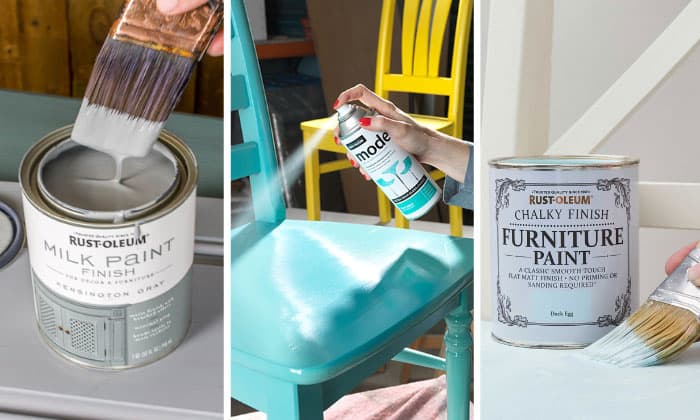
If you have used Rustoleum paints before, you know that patience is badly needed while waiting for its recoating time. The tips below help speed up your application.
1. Paint under normal temperatures.
Do your painting project on dry days. This helps the paint to cure in no time as there are no weather elements to disturb its curing.
2. Paint in a Well-ventilated Area.
A well-ventilated area allows warm air to move freely on the painted surface, which accelerates the evaporation of solvent present on the paint. Placing a fully blasting fan towards the painted surface can also aid in the speedy drying of the area.
3. Add Drying Agent
A drying agent or enamel accelerator helps quicken the binding of paint mixture, thereby shortening the drying time. Also, it enhances the paint properties during the drying stage like increased hardness, enhanced resistance to abrasions, and improved sheens.
Frequently Asked Questions
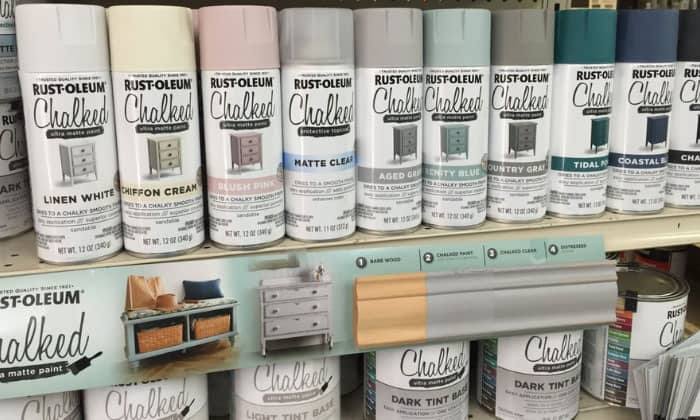
How many coats of Rustoleum do I need?
The best and most recommended option by experts and the Rustoleum brand itself is two coatings, allowing some minutes or hours (depending on the types of paint) in between coats.
What happens if I paint the second coat too early?
A second coat that is done too early will result in sabotage of the earlier paint. It ruins the beauty of the paint by forming streaks on the surface, causing the surface and the paint to look uneven.
Is Rustoleum paint waterproof or not?
Yes, Rustoleum paints are waterproof. They are designed to preserve the painted surfaces against outside water and the heavy onslaught of rain and storm. However, their resistance depends on the water exposure and the paint used on the surface.
Conclusion
How long does Rustoleum take to dry? The drying of Rustoleum paints is often influenced by its composition, properties, and environmental factors that we are not able to control or sometimes, fail to notice.
However, by familiarizing oneself with the appropriate guidelines on how long Rustoleum paint takes to dry and useful tips to hasten the drying process, you can avoid any painting mishaps. With this knowledge, you can confidently tackle your next painting project with ease and precision.
The post How Long Does Rustoleum Take to Dry? (Rust-Oleum Drying Time) appeared first on Arthitectural.
